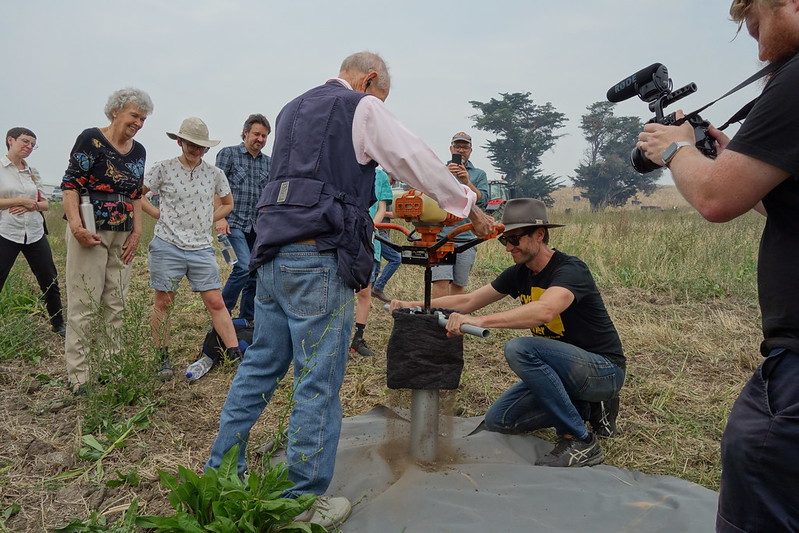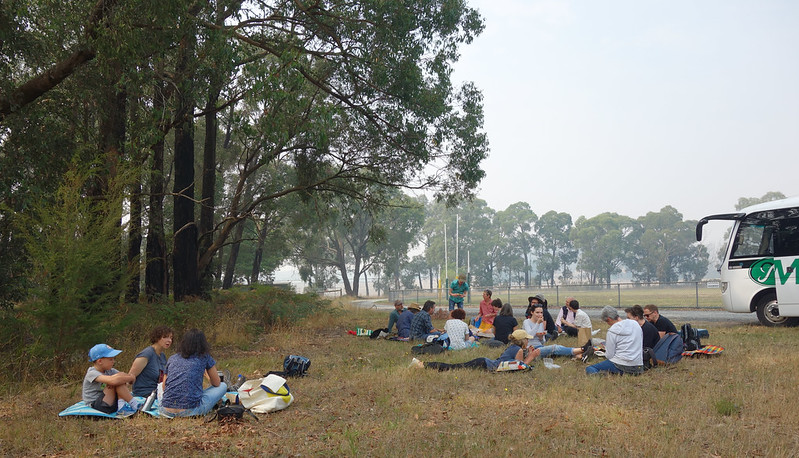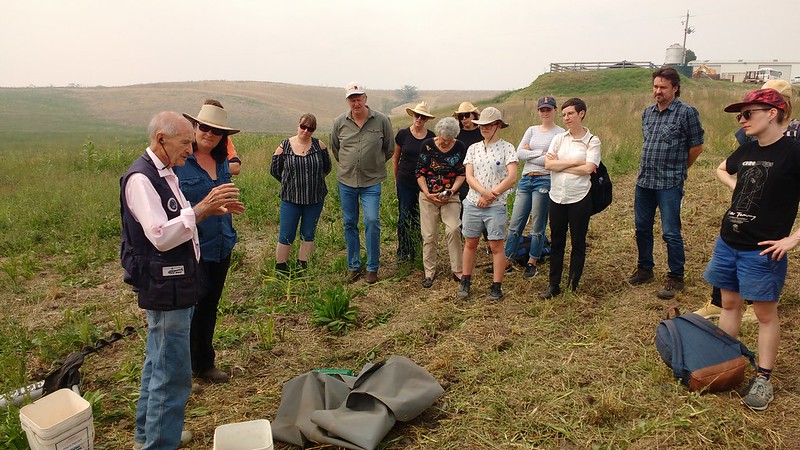
On March 9, we hosted a bus trip to Hallora (about 1.5 hours south east of Melbourne) to learn hands-on about soil and the carbon economy.
As the bus hurtled down the highway, Allan Yeomans and I gave a brief history of our own work, telling how an artist and an agricultural innovator came to be working together on this project. We were joined by Damien Lawson (an advisor to Adam Bandt of the Greens) who has done a lot of research on global warming and environmental policy. Damien gave a user-friendly summary of the current federal policy situation around climate change mitigation.

We stopped off at the Hallora Recreation Reserve for a picnic lunch. Sharing a picnic is a great opportunity for people to get to know each other. It creates space to slowly absorb new ideas and allows us to make new friends in the process.

While we digested, musician Roo Bramley serenaded us on ukulele with the very catchy “Three Acres and a Cow” – an English song from the late 1800s about the struggle for access to farmland following the enclosure of the commons. Issues around land rights in Australia are of course quite different, and it’s useful to remember that the culture which colonised Australia has an ancient history of land injustice all of its own…

At the farm we were welcomed to country by Bunurong elder Uncle Shane Clarke who emphasised the importance of caring for the land and commended the group for taking the time to educate ourselves. Uncle Shane and farmer Niels Olsen swapped notes about diverse pasture species, particularly the suggestion of incorporating native perennial Kangaroo Grass among the traditional (European) agricultural plants on Niels’ farm. From Niels we heard about his journey towards building soil health, including mistakes he has made with over-using fertilizer in the past, which revealed the possibility of a better way of farming focused on soil biology.
Niels works with a combination of pasture species in a beef grazing system (about 8 different plants all together in the same paddock) which gives the cows an excellent diverse diet and helps the soil to draw down carbon dioxide from the atmosphere. This “salad-bowl beef” method is combined with his patented Soilkee Renovator machine, which mulches and plants seeds at the same time to accelerate the decomposition-regeneration cycle of the plants and tiny creatures in the soil.

Adrianna Marchand (aka “The Lady Corer”) is a soil scientist who works alongside farmers to take samples to send off for analysis at the lab. Adrianna, Niels and Allan engaged in a lively conversation about best practices for farming, testing and analysing soil carbon.

Niels and Adrianna (in collaboration with Matthew Warnken) have been working within the parameters of the Emissions Reduction Fund to receive carbon credits for the increase in organic carbon on Niels’ farm over the last few years. This is very exciting as it’s a proof-of-concept of the idea of paying farmers to end climate change. The big challenge now is how to scale up what Niels is doing to a massive scale.
Finally, Allan demonstrated his Yeomans Soil Pipe and Auger method of gathering soil samples. This works in concert with the Yeomans Carbon Still as a carefully calibrated soil collection and testing system.

More photos of the day are here.
Many thanks to Melissa Ratliff from MUMA for helping to organise the field trip and to the Olsen family for hosting us.
(Photos are by Lucas Ihlein, Kylie Wilkinson, and Melissa Ratliff.)
